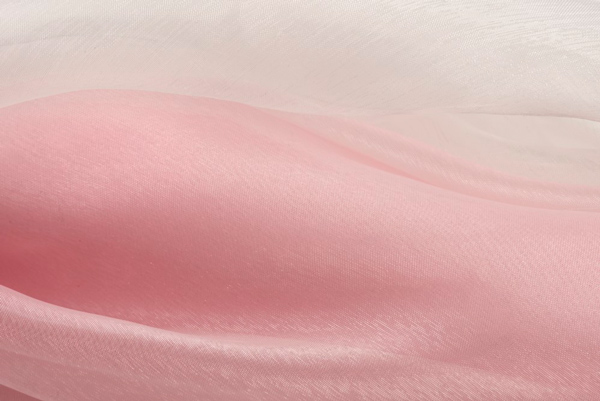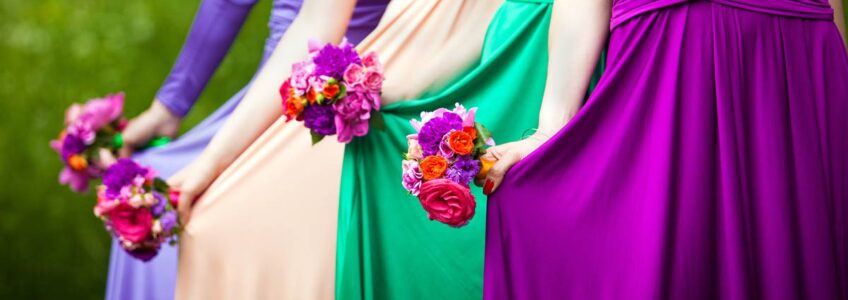For special occasions, it is important to be able to show off the right dress, starting from the choice of fabric and colors. For industry experts and lovers of sewing, making a custom dress, which is unique in its kind, is not so difficult, just keep in mind the model you want to go to recreate. Depending on the model, you should combine a fabric that gives the figure the right degree of body, transparency and lightness.
The fabrics for ceremonial dresses are many, each of them with specific characteristics.
Let’s see together which ones are the most valuable. Manifattura Foderami Cimmino has selected for you a wide catalogue of high quality fabrics, to be used right in view of ceremonies and special events.

The best fabrics for ceremony: Cimmino recommends
Among the best fabrics for ceremonial dresses stands out undoubtedly silk and its derivatives (such as organza and satin), a 100% natural protein that is obtained from silkworm cocoons.
Silk has always been considered a symbol of nobility and wealth. In fact, for a long time, it was the exclusive preserve of the ancient Chinese emperors, priests and a few other privileged ones. At that time, the color of the garments made with this type of fabric was also fundamental, as it represented the social class of belonging: yellow was the color of the emperor or empress; purple was that of the other women of the emperor; the heavenly one of the court officers.
Nowadays, different yarns and fabrics can be obtained with raw silkthread. Silk is generally mixed with wool or synthetic fibres in order to improve the yield of the final product. Some of the fabrics that can be obtained from the subsequent processing and mixing with other textile fibers are: taffeta, chiffon, organza, satin, velvet, damask and crepe. In addition to silk and its derivatives, it is also worth mentioning tulle and lace fabrics, particularly suitable for making precious and enchanting ceremonial dresses. Let’s analyze in detail what Cimmino recommends.
Satin
The history of satin is closely linked to that of silk and for millennia it has been a monopoly of China, gaining popularity in Europe in the twelfth century. Satin has always been a very valuable fabric, used for both clothing and furniture. In particular, materials such as damask, chandelier and brocade (which have satin as the basis) have dressed and adorned the European courts for centuries. Contrary to what many believe, satinis not a fiber, but a textile armor: one of the basic armor along with canvas and twill. Although its excellent material is silk, satin can also be made of synthetic fibers such as polyester.
On Cimmino’s catalogue there are numerous 100% polyester satin fabrics, elegant and resistant, suitable for the creation of tailored dresses of a certain visual impact. Among them, the following stand out: Satin Duchesse Color and Satin Duchesse Extra. The first is a satin with a smooth and shiny appearance, available in a wide variety of colors: its particular structure allows you to perfectly model the figure, which is why it is widely used in the making of ceremony dresses. The second type of satin, available in white and ivory, is perfect for making beautiful wedding dresses.


Organza
Organza is a fabric similar to chiffon but slightly heavier. The main difference is in fact in its rigidity that makes it a more natural choice for structured and elegant clothes that must maintain the shape. The organza is made from very thin yarns (traditionally it is organzino silk) and is in fact a light, transparent fabric, cloth weave.
To date, organza is also woven with cotton or synthetic fibers such as polyester, just like satin, although the most luxurious ones remain those woven in silk.
In addition, it can be produced in various types: wrinkled, smooth or iridescent (an optical effect produced by using yarns of different colors used for the weft and warp). The fabric Organza Arcobaleno Unito, available in different colors, is ideal for the creation of refined evening dresses.

Tulle
Tulle is a very light fabric made of silk threads, cotton or synthetic materials such as nylon.
The threads are woven in such a way as to create a transparent, yet stable network.
The fabric has a certain elasticity and versatility. In addition to being used in the world of dance and entertainment, it is also used to make wedding dresses and elegant dresses in general, or to make wedding favors. In short, its application in the field of fashion is very vast.
Depending on its strength, the tulle also allows for delicate embroidery.

The Tulle Valeria Mano Seta is a very delicate and semi-transparent fabric with a soft and light hand. This is also available in many colors and is mainly used to make wedding veils, but also to create volume to the multilayer skirts or draperies to the wedding dress.
Lace
Lace is a type of lightweight fabric, precious and decorated, obtained thanks to a particular processing of yarns. This process creates more or less articulated designs and textures, which make the fabric unique. The lace fabric is available in different variants of patterns and colors. The history of this fabric is also very ancient. Until the eighteenth century, lace was present mainly in men’s clothing, but from the ‘800 onwards it became an exclusively feminine prerogative, to describe an elegant, ethereal, dreamy and delicate woman.
If you want to create the perfect dress for an important ceremony, take a look at some of the lace fabrics selected by Cimmino, such as the Atlas Elastic Lace and the Bistretch Lace Twins. The first is a very elegant lace, used especially for the creation of dresses with a classic aftertaste, for inserts, bodices, outerwear and dance dresses. The lace Bistretch or bielastico boasts a floral theme design: very versatile, it is suitable not only for the creation of clothes for dance and entertainment but also for ceremonial garments, thanks to the wide range of colors.


Explore the catalogue of fabrics for ceremony dresses proposed by Manifattura Foderami Cimmino: a universe of high quality alternatives and different shades of color to celebrate important events in the best way!



